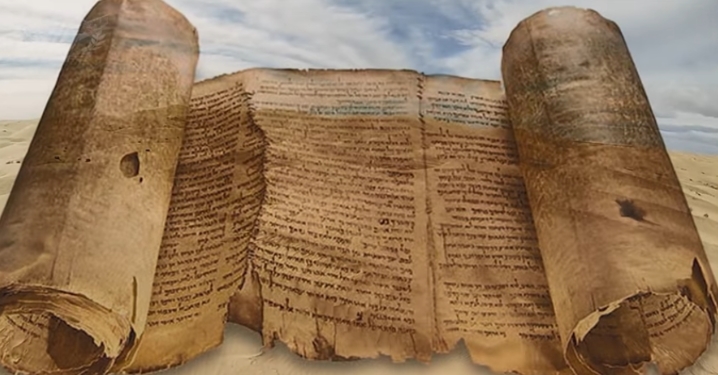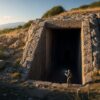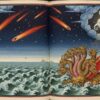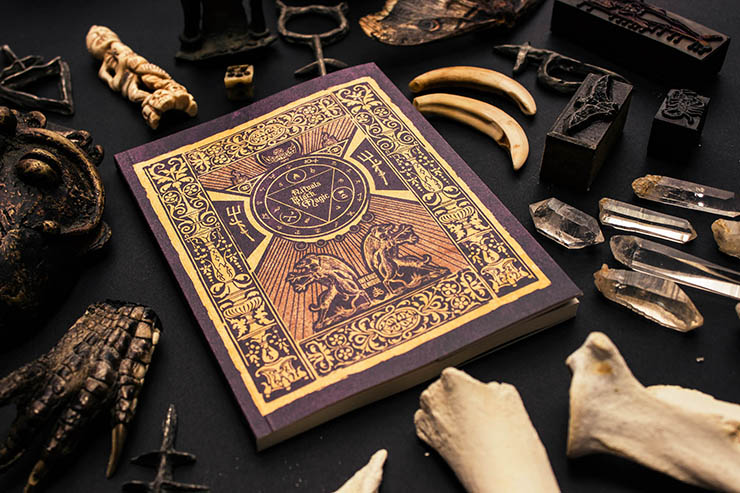The Gnostics were adherents of a profound and enigmatic ancient religion rooted in mystical traditions that predate many of the world’s well-known spiritual systems. Emerging in the early centuries of the Common Era, Gnosticism blended elements of philosophy, spirituality, and cosmology into a unique worldview that captivated its followers. However, this esoteric faith faced fierce opposition from the early Christian Church, which branded Gnostic beliefs as heretical. This persecution led to the suppression of Gnostic teachings, causing much of their wisdom and practices to fade into obscurity over the centuries.
Despite the loss of many Gnostic texts and traditions, a remarkable discovery in recent times has reignited interest in this mysterious group. An ancient manuscript, unearthed by researchers, promises to shed new light on the Gnostics’ long-hidden beliefs. What makes this find particularly intriguing is its potential to reveal astonishing details—not only about the Gnostics’ spiritual doctrines but also about their perspectives on extraterrestrial life and the UFO phenomenon. Could this newly discovered document hold the key to unraveling one of humanity’s greatest mysteries: the existence of aliens and their interactions with Earth?
Who Were the Gnostics?
To fully appreciate the significance of this discovery, it’s essential to understand who the Gnostics were and what they believed. The term “Gnostic” derives from the Greek word gnosis, meaning “knowledge”—specifically, a deep, intuitive understanding of divine truths. Unlike mainstream religions that emphasized faith and obedience, Gnosticism prioritized personal spiritual enlightenment and direct experience of the divine. Gnostics believed that the material world was flawed or illusory, created by a lesser deity, and that true salvation lay in awakening to a higher, transcendent reality.
This worldview put them at odds with the early Christian Church, which sought to unify its doctrine and eliminate competing ideologies. The Gnostics’ unconventional ideas—such as their rejection of the Old Testament God as a false creator and their emphasis on secret teachings—were deemed heretical. As a result, Christian authorities persecuted Gnostic communities, destroyed their writings, and drove their practices underground. Over time, the details of Gnostic beliefs became fragmented, preserved only in scattered texts and oral traditions.

The Lost Knowledge of the Gnostics
For centuries, historians and theologians have pieced together the Gnostic story from surviving documents like the Nag Hammadi library, a collection of Gnostic scriptures discovered in Egypt in 1945. These texts offered tantalizing glimpses into Gnostic cosmology, theology, and rituals. However, many gaps remained, leaving scholars to speculate about the full scope of their teachings. The persecution by the Christian Church ensured that much of this ancient wisdom was lost to history—until now.
The recent discovery of a previously unknown Gnostic manuscript has sparked excitement among researchers and enthusiasts alike. This document, believed to date back to the early centuries AD, contains detailed accounts of Gnostic beliefs that were thought to have vanished forever. Unlike earlier finds, this manuscript appears to delve into topics that extend beyond traditional spirituality, touching on phenomena that resonate with modern mysteries—most notably, the UFO phenomenon and the existence of extraterrestrial beings.
The Gnostic Connection to Aliens: The Archons
One of the most provocative revelations in Gnostic writings, including this newly discovered manuscript, is their mention of beings known as Archons. The Gnostics described the Archons as powerful, otherworldly entities that exerted influence over humanity and the material world. According to Gnostic cosmology, these beings were not benevolent guides or divine messengers but rather oppressive forces that sought to keep humans trapped in ignorance and illusion.
What’s striking about the Archons is how closely their description aligns with modern accounts of extraterrestrial beings. The Gnostics portrayed them as ancient—far older than humanity—and possessing advanced knowledge or abilities beyond human comprehension. Some researchers speculate that the Archons could represent an early attempt to document encounters with aliens, interpreted through the lens of Gnostic mysticism. This raises a compelling question: Did the Gnostics possess knowledge of extraterrestrial life that has been overlooked or misunderstood for millennia?
The newly discovered manuscript reportedly expands on the nature of the Archons, offering detailed insights into their origins, motives, and interactions with humanity. If these accounts are substantiated, they could provide a historical bridge between ancient spirituality and contemporary UFO research, suggesting that the phenomenon of alien contact is not a modern invention but a thread woven into the fabric of human history.
Could This Manuscript Solve the UFO Mystery?
The UFO phenomenon has captivated the public imagination for decades, fueled by sightings, government disclosures, and countless theories about extraterrestrial visitors. While mainstream science remains skeptical, the discovery of this Gnostic manuscript introduces a fresh perspective—one that predates modern UFO lore by nearly two thousand years. Could the Gnostics’ references to the Archons and their otherworldly influence be an ancient record of alien encounters? And if so, what does this mean for our understanding of humanity’s place in the cosmos?
The manuscript’s potential to connect Gnostic beliefs with the UFO phenomenon has profound implications. It suggests that what we perceive as a modern mystery may have roots in antiquity, observed and interpreted by a group whose insights were silenced by history. By studying this document, researchers hope to uncover not only the lost teachings of the Gnostics but also clues about humanity’s relationship with beings from beyond our world.
Why This Discovery Matters Today
In an era where interest in UFOs and extraterrestrial life is at an all-time high—spurred by declassified government reports and high-profile investigations—the timing of this manuscript’s discovery couldn’t be more significant. It offers a rare opportunity to explore an ancient perspective on questions that continue to perplex us: Are we alone in the universe? Have aliens visited Earth? And if so, what is their purpose?
For those intrigued by these possibilities, the manuscript represents more than a historical artifact—it’s a potential key to unlocking secrets that span millennia. Its references to the Archons and their role in human affairs could reshape our understanding of both Gnosticism and the broader narrative of extraterrestrial contact.
Dive Deeper: Watch the Video
To fully grasp the importance of this discovery, you won’t want to miss the exclusive video linked below. Featuring never-before-seen images of the manuscript, expert analysis, and detailed explanations, the video brings this ancient text to life. It’s a must-watch for anyone curious about the Gnostics, the Archons, and their possible connection to the UFO phenomenon. Click the link to explore this groundbreaking find and see the evidence for yourself.
In conclusion, the Gnostics’ mystical religion, once suppressed and nearly forgotten, may hold answers to some of today’s most enduring mysteries. With the discovery of this ancient manuscript, we stand on the brink of rediscovering lost knowledge that could forever change how we view our world—and the cosmos beyond.

















